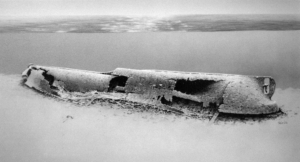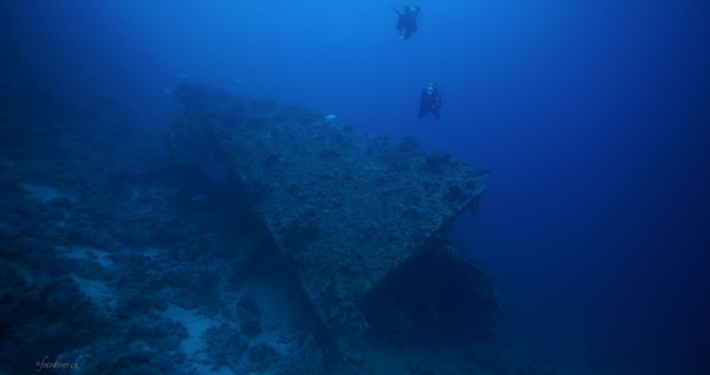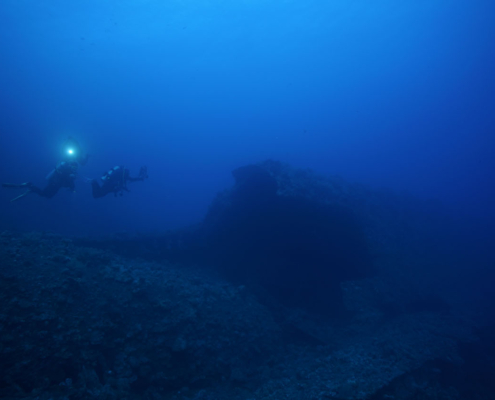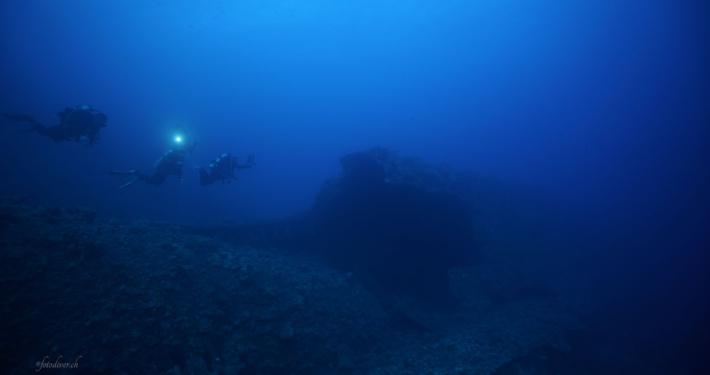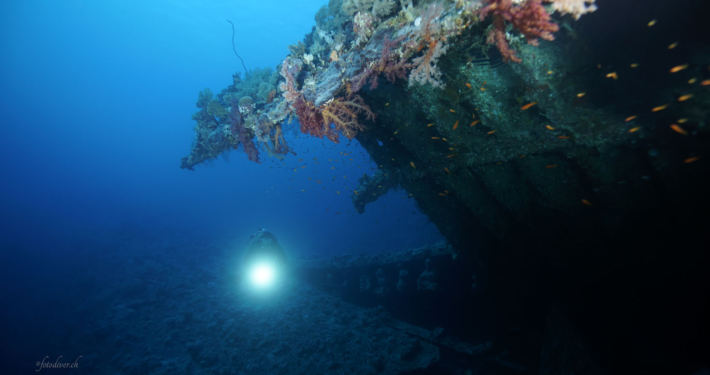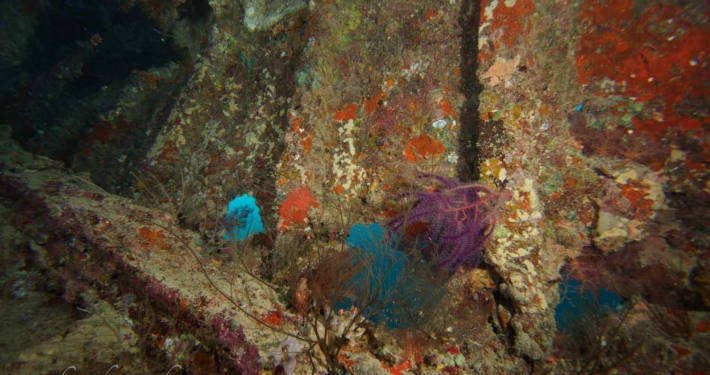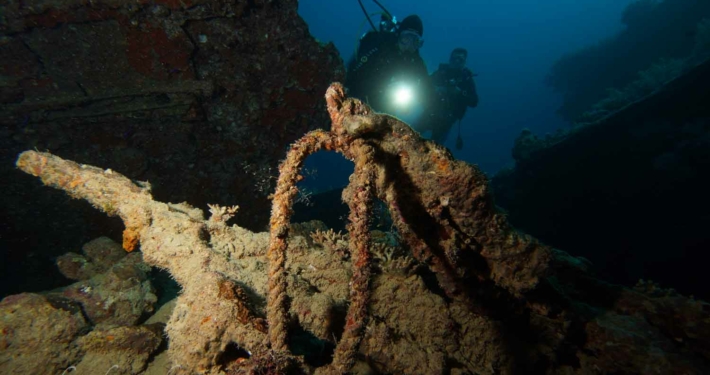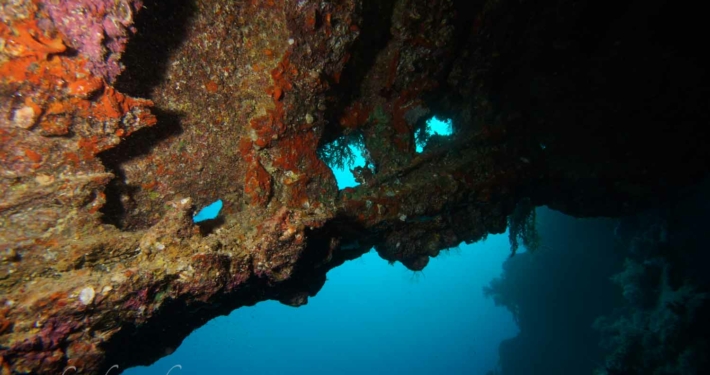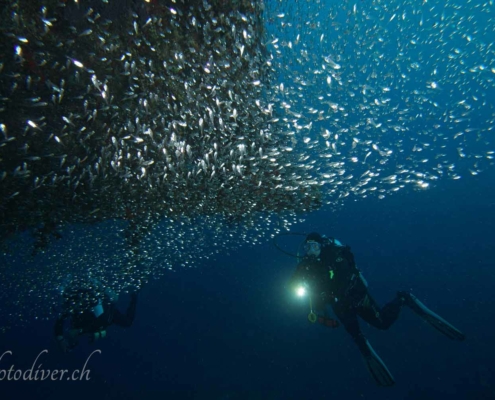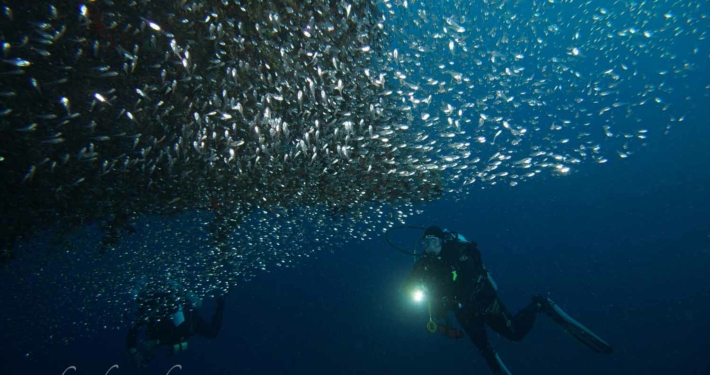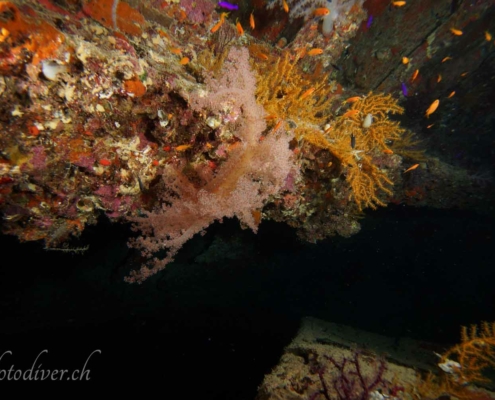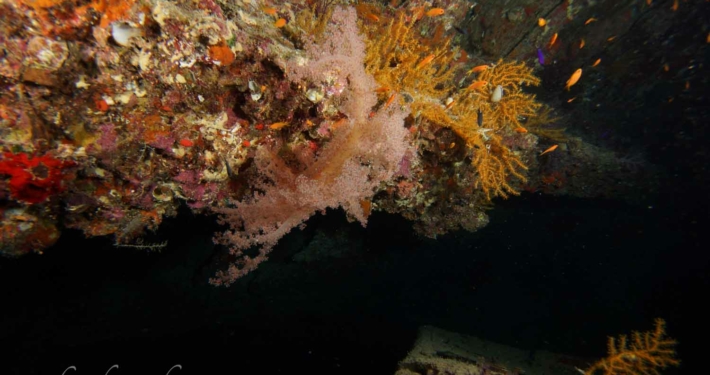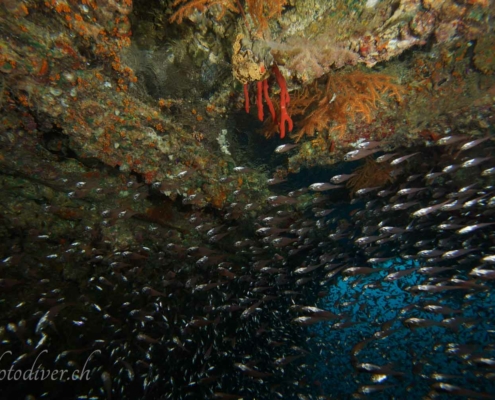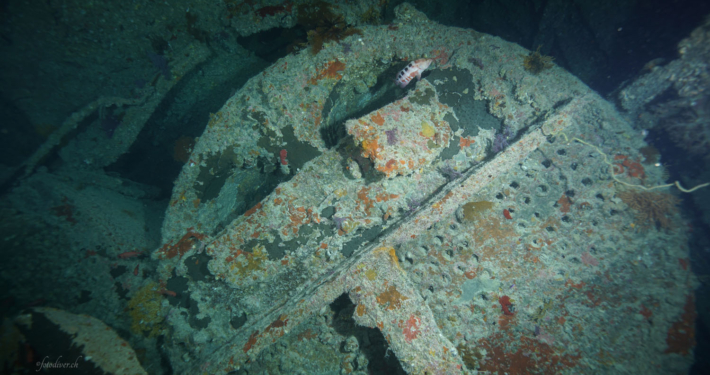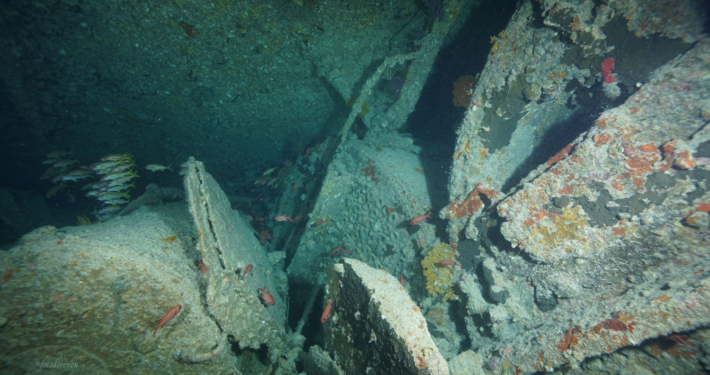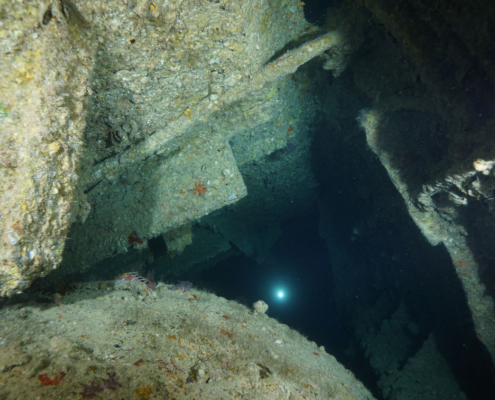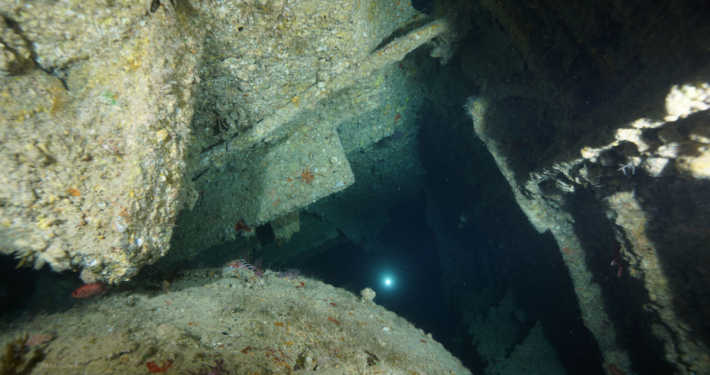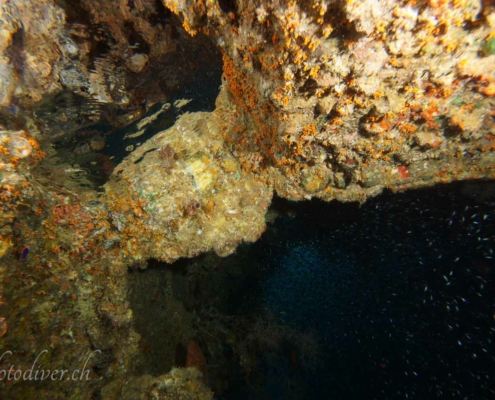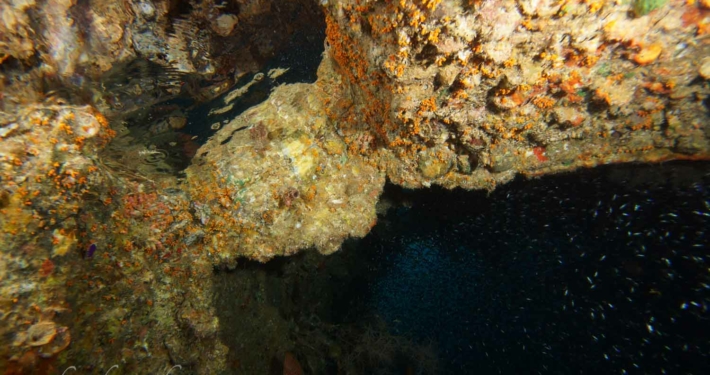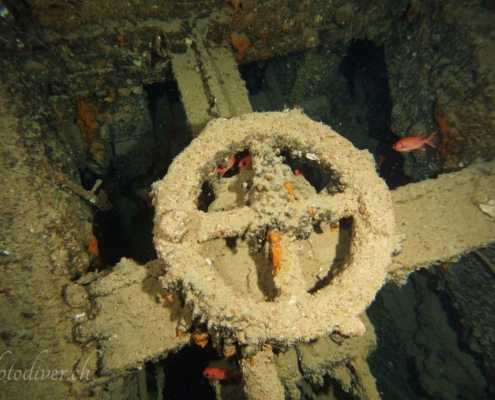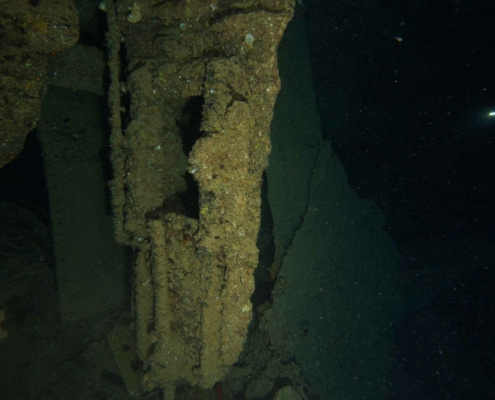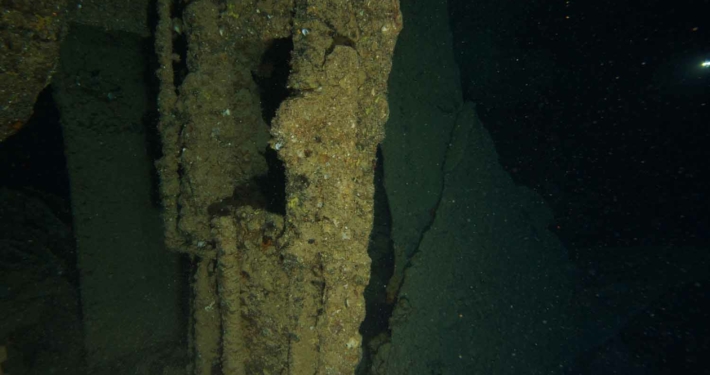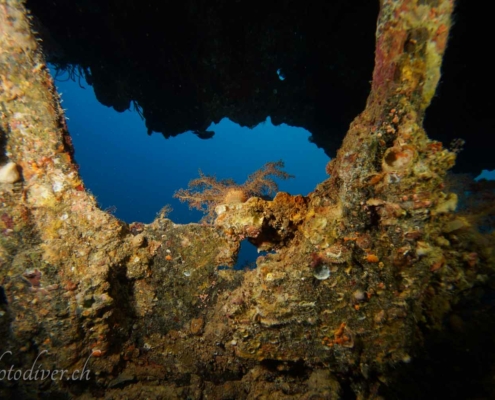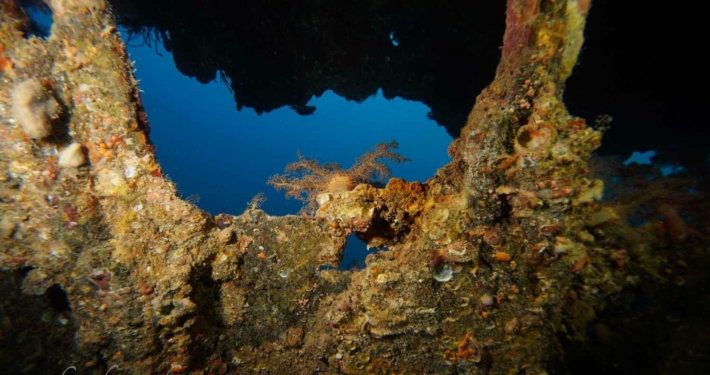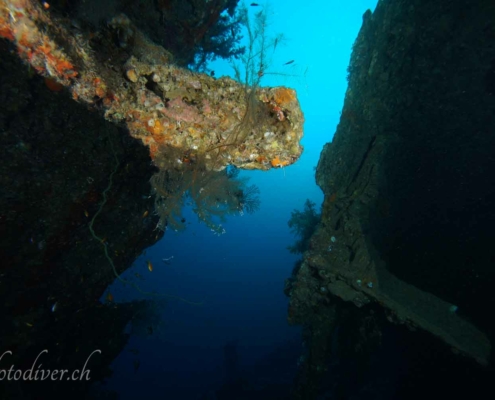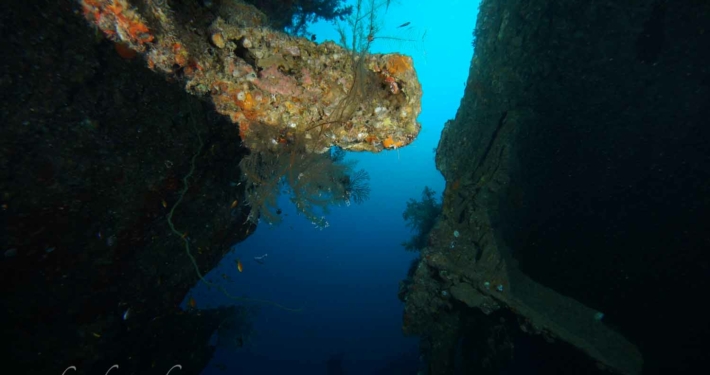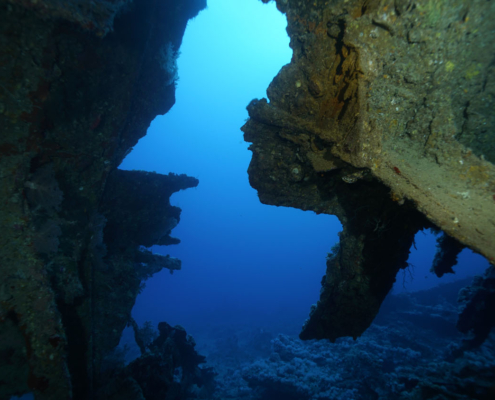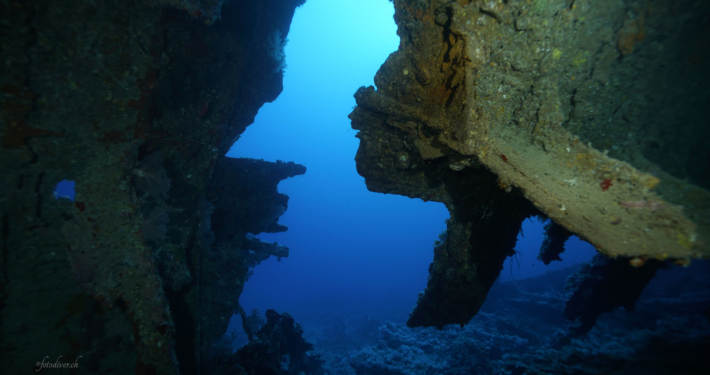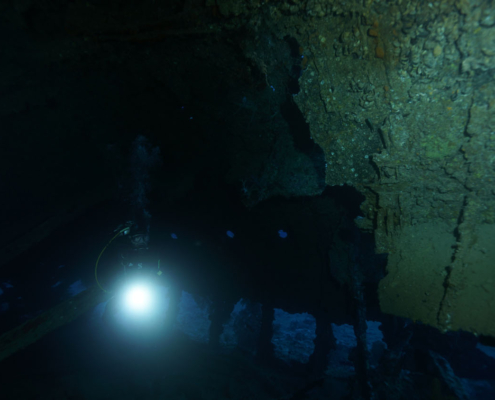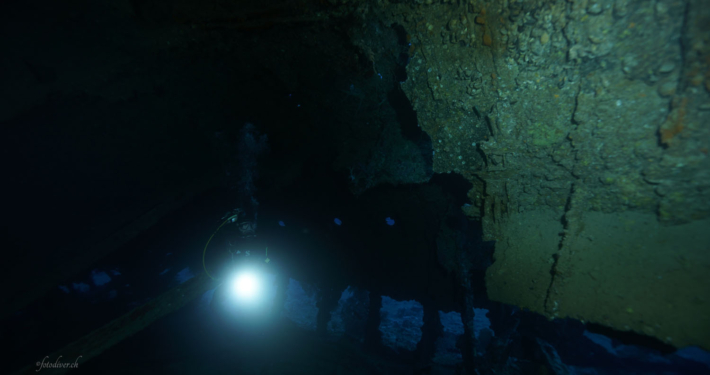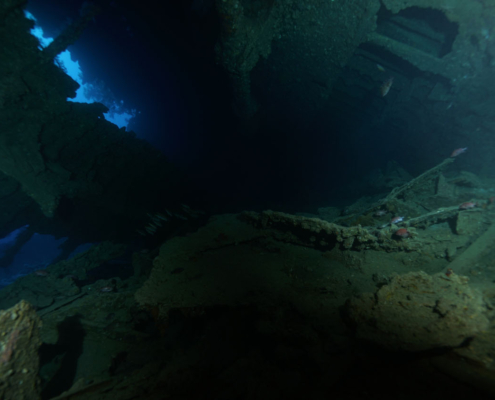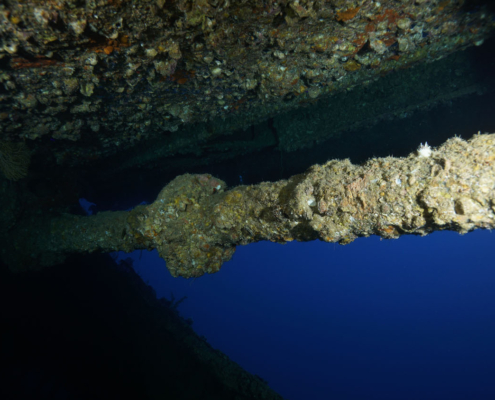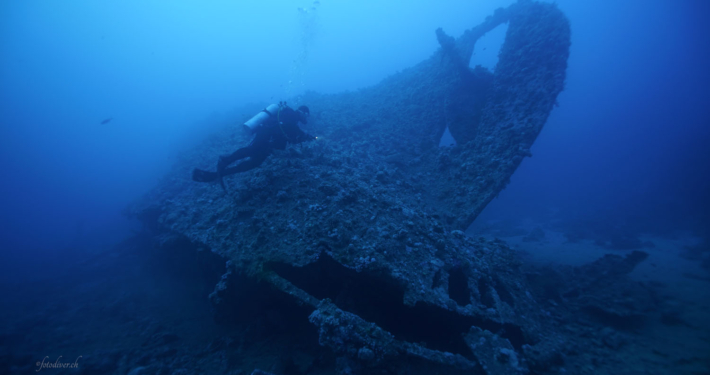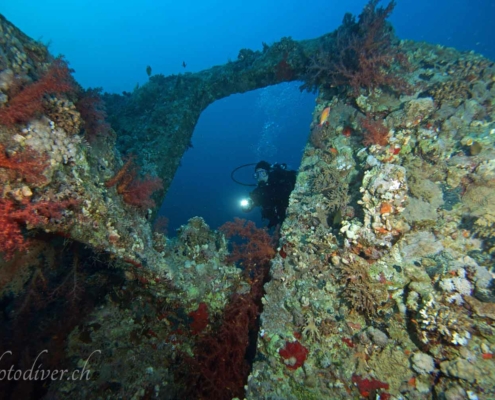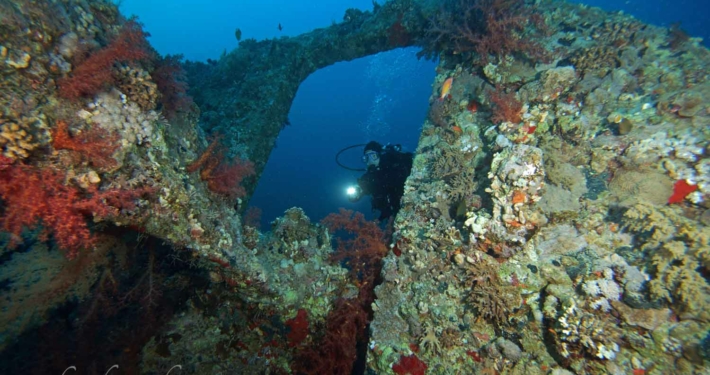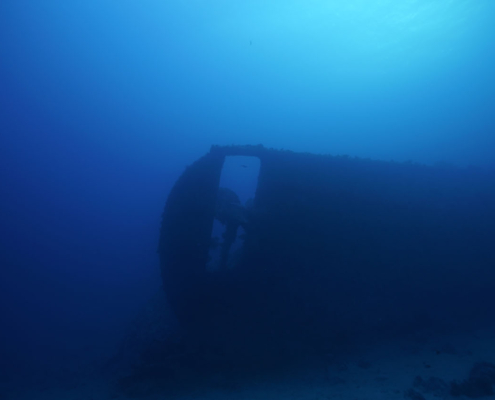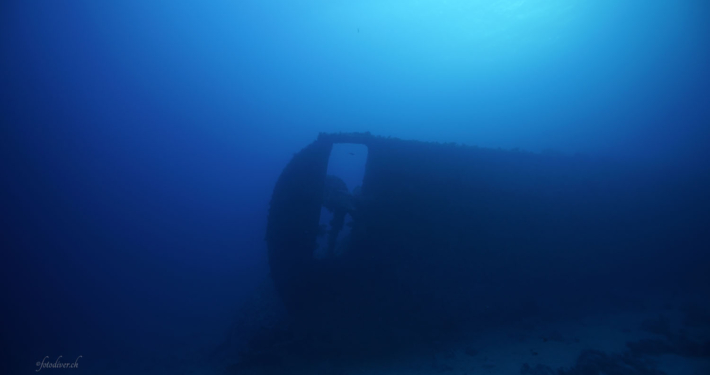Dunraven
Sunk April 22, 1876
The 85-meter-long, 10-meter-wide freighter Dunraven was launched in 1873 in Newcastle, England, at Mitchell Iron Shipbuilders. The steel-hulled, wooden-decked ship had a steam engine and an auxiliary sail with two masts and schooner rigging. The Dunraven changed hands thirteen times in three years. On her last voyage, she was en route from Bombay, India, to Newcastle with a cargo of cotton, lumber, and spices when she ran aground at full speed on Sha’ab Mahmoud Reef on April 22, 1876. A navigational error by the captain was later blamed for the accident. The ship caught fire after the impact. The crew was able to salvage some of the cargo and equipment before the Dunraven was abandoned. About twelve hours after grounding, she sank stern first. The crew was able to save themselves.
The wreck of the Dunraven was discovered in 1977 during a geological expedition and was approached by submersibles from Sharm El-Sheikh beginning in 1978. The identity of the wreck remained uncertain for a long time, including speculation that it was a ship carrying gold for T. E. Lawrence (Lawrence of Arabia). First clues to the age of the ship, which finally led to its identification, were given by mineral water bottles found in the wreck, which could be assigned to a manufacturer existing until 1880.
The Dunraven lies with the keel up on the reef, the deepest point at about 29 m represents the stern, while the top of the keel rises to 18 m. The bow is broken off, but lies on the reef. The bow is broken off, but still lies in union with the rest of the ship. The most prominent point of the wreck is the rudder with the propeller, which have a dense growth of corals (stony and leather corals). From the stern on the left side are the two broken masts and other remains of the superstructure. Through numerous holes and cracks it is possible to enter the interior of the hull, where among other things the remains of the steam engine can be found. The blue light coming through these holes from the outside gives very nice impressions. Due to its long time on the seabed, the Dunraven has a strong growth of stony, leather and soft corals and represents a biotope with a great richness of species. Among the animals found inside the hull are glassfish, lionfish and groupers.

